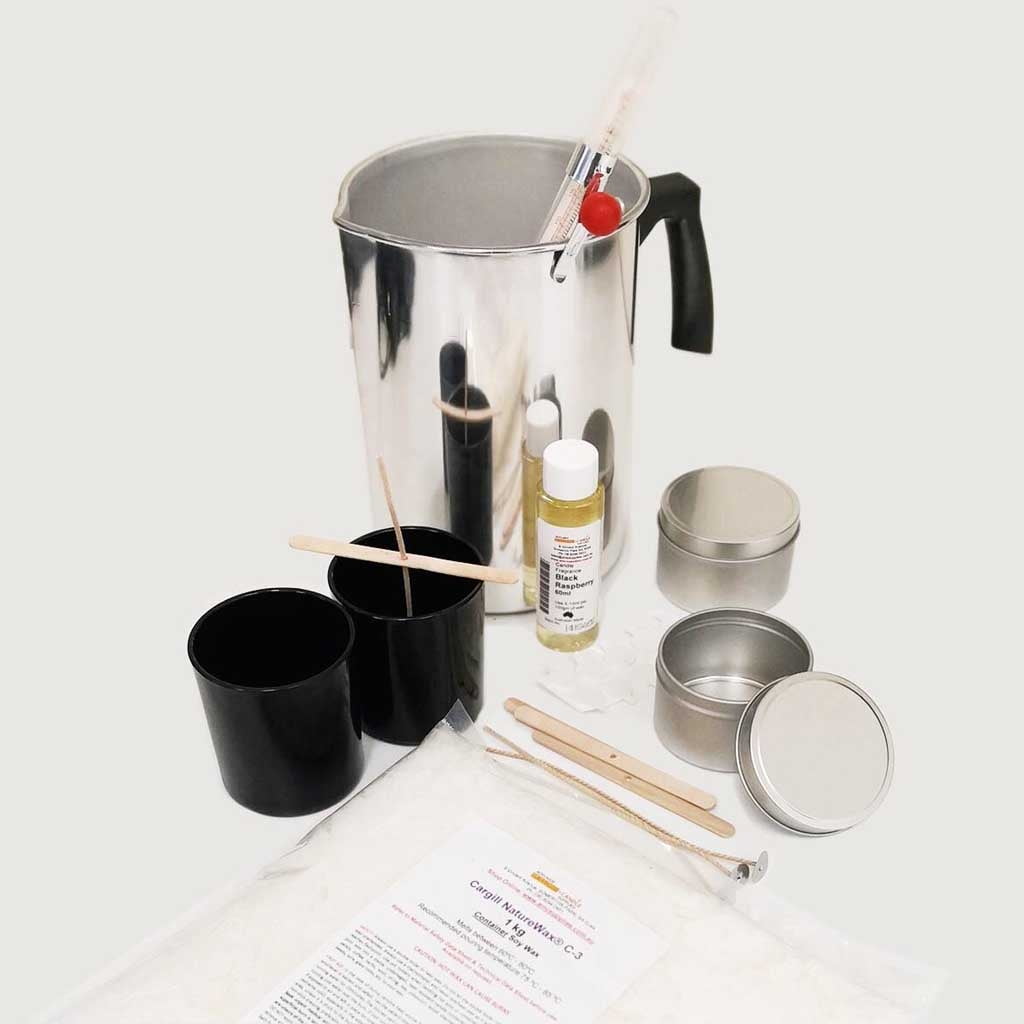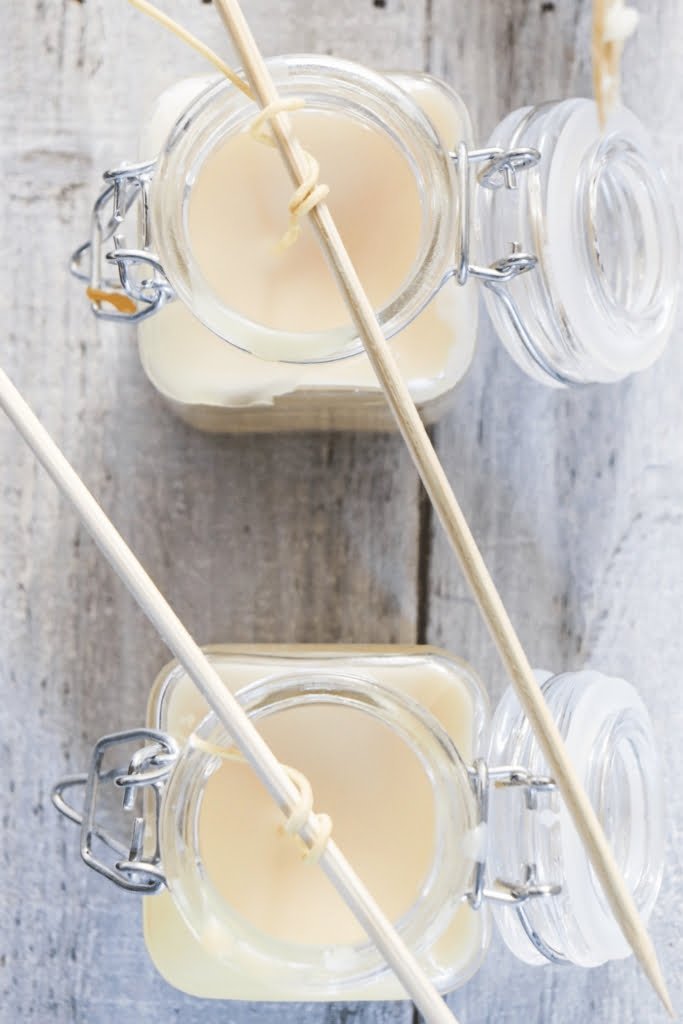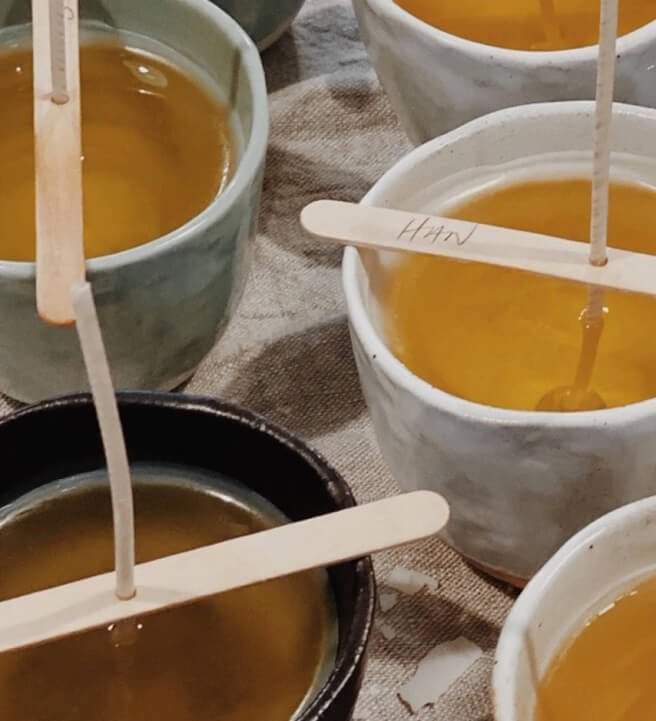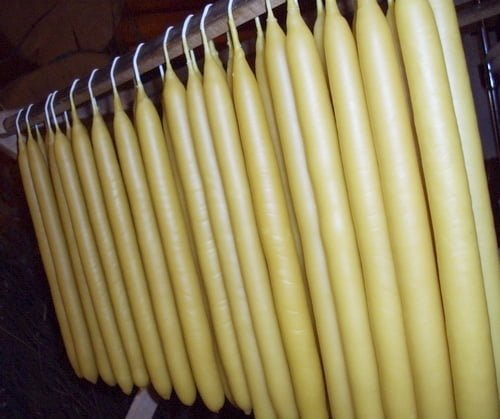Can you use perfume in candle making? This question has sparked curiosity among enthusiasts of homemade candles who are seeking to create a truly captivating atmosphere. As the popularity of candle making continues to soar, scent plays a vital role in shaping the ambiance and mood. In this article, we will delve into the world of fragrance and candle making, exploring the chemistry behind scents, dispelling common myths, and providing insights on selecting and incorporating fragrance oils for optimal results.
There is something enchanting about flickering candlelight adorned with delightful fragrances that can transport us to different realms, evoke memories, or simply set a cozy ambiance. As more people discover the joy of creating their own homemade candles, the importance of choosing the right scent becomes paramount. Whether you want to unwind after a long day with soothing lavender or uplift your spirits with zesty citrus notes, understanding how fragrance works in candle making is crucial.
When it comes to scents in candle making, there are two main options: fragrance oils and essential oils. These ingredients hold distinct characteristics that impact their effectiveness in candles. The choice between them depends on factors such as scent strength, longevity, compatibility with candle wax, and personal preferences. It is essential to use high-quality oils specifically formulated for candle making to ensure safety and achieve an optimal fragrance experience.
Join us on this olfactory journey as we debunk misconceptions surrounding perfume utilization in candle making and provide valuable tips for selecting quality fragrance oils that align with your desired scents. Discover the proper techniques for incorporating fragrances into candle wax, safety considerations when working with fragrance oils, best practices for scent longevity through proper curing and storage – all leading towards troubleshooting common scent-related challenges that arise during the artful process of candle making.
Gather your favorite aromas; let’s dive into this exciting fusion of fragrance and candle craftsmanship.
Understanding the Chemistry of Fragrance Oils and Essential Oils in Candle Making
When it comes to creating beautiful and fragrant homemade candles, understanding the chemistry of fragrance oils and essential oils is crucial. These two types of scents are commonly used in candle making to create captivating aromas that enhance any space. Let’s take a closer look at the benefits and differences between fragrance oils and essential oils, as well as their compatibility with candle wax.
Fragrance oils are synthetically made scents that are specifically formulated for use in various applications, including candle making. These oils are created through chemical processes to replicate natural scents or create unique fragrances that cannot be found in nature. One of the advantages of fragrance oils is their strength; they tend to have a more intense scent compared to essential oils. This means that you can achieve a strong aroma even with a small amount of fragrance oil.
On the other hand, essential oils are derived from natural sources such as plants, flowers, fruits, and spices through steam distillation or cold pressing methods. Due to their natural composition, essential oils offer a wide range of aromas that can add depth and complexity to your candles.
However, it’s important to note that essential oils generally have a lighter scent compared to fragrance oils. They may require a larger quantity to achieve the desired strength of fragrance in your candles.
In terms of compatibility with candle wax, both fragrance oils and essential oils can be used in most types of waxes, including soy wax, beeswax, and paraffin wax. However, it’s important to choose high-quality fragrance or essential oils specifically designed for candle making to ensure optimal performance. Using low-quality or improperly formulated scents may result in poor scent throw or even damage to your candles.
| Fragrance Oils | Essential Oils |
|---|---|
| Created synthetically | Derived from natural sources |
| Intense scent | Lighter scent |
| Suitable for various wax types | Suitable for various wax types |
When incorporating fragrance or essential oils into your candle making process, always follow the recommended guidelines and usage rates provided by the manufacturer. This will ensure that you achieve the desired scent strength without compromising the quality and longevity of your candles. So whether you choose fragrance oils or essential oils, understanding their unique properties and chemistry will help you create beautiful and fragrant homemade candles that everyone will love.
Dispelling the Myth
Perfume and fragrance oils may seem similar, as they both contribute to creating pleasant scents. However, when it comes to candle making, it is essential to understand the key differences between these two and why perfume is not suitable for this craft. This section aims to dispel the myth surrounding the use of perfume in candle making.
When it comes to creating scented candles, fragrance oils and essential oils are commonly used. Fragrance oils are synthetic scents created specifically for use in various products like candles, soaps, and lotions. On the other hand, essential oils are derived from natural sources such as plants and flowers through a process of distillation. While both options can provide delightful fragrances, there are distinct differences that make fragrance oils more suitable for candle making.
One of the main reasons perfume should not be used in candle making is due to its alcohol content. Perfume contains a high concentration of alcohol, which can be flammable when exposed to heat or an open flame. When using perfume in candles, the alcohol can cause an increased risk of fire hazards and potentially compromise safety. In contrast, fragrance oils are specifically formulated for safe incorporation into candles without any alcohol content.
To further elaborate on this topic, it would be beneficial to include relevant data on perfume composition (including average alcohol content) compared to fragrance oil composition (emphasizing their formulation for candle making safety). Additionally, information highlighting specific risks associated with using perfume in candles (e.g., increased flame height or rapid burning) and potential consequences could be mentioned here as well.
| Perfume | Fragrance Oils |
|---|---|
| Average Alcohol Content: X% | No Alcohol Content |
| Risks: Increased flame height, rapid burning | No additional risks when used within recommended guidelines |
Selecting and Testing the Perfect Fragrance Oils for Candle Making
When it comes to candle making, selecting the perfect fragrance oils is a crucial step in creating candles that truly captivate the senses. With so many options available, it can be overwhelming to choose scents that align with your desired atmosphere and mood. Fortunately, there are some tips and tricks you can follow to ensure you find the perfect fragrance oils for your candle making endeavors.
- Determine Your Desired Scent Profile: Before diving into the world of fragrance oils, take some time to consider the type of scent you want for your candles. Are you looking for a floral aroma, a refreshing citrusy scent, or a cozy and warm fragrance? Having an idea of the scent profile you’re after will help narrow down your options when selecting fragrance oils.
- Research Reliable Sources: It’s essential to purchase high-quality fragrance oils from reputable sources. Look for suppliers that offer detailed information about their products, including the ingredients used and any safety precautions. Reading customer reviews can also give you insight into the quality and performance of specific fragrance oils.
- Perform Scent Tests: Once you’ve obtained a selection of fragrance oils that pique your interest, it’s time to put them to the test. Perform small scent tests by adding a few drops of each oil onto cotton balls or aroma test strips. Allow them to sit for a few minutes before inhaling and evaluating their aromas.
- Adjustments and Blending: Don’t be afraid to experiment with blending different fragrance oils together to create unique scents. By mixing different oils in varying ratios, you can customize your candles’ fragrances according to your preferences.
- Consider Scent Strength and Compatibility: Keep in mind that fragrance oils vary in their scent strength and compatibility with different types of waxes. Some fragrance oils are specifically formulated for use with certain wax types like soy wax or paraffin wax. Be sure to read product descriptions carefully to ensure compatibility with your chosen candle wax.
By following these tips for selecting and testing fragrance oils for your homemade candles, you can create delightful scents that enhance the ambiance of any space. Remember, finding the perfect fragrance oils is a personal journey, so take the time to explore different options until you discover the scents that truly resonate with you.
Proper Incorporation Techniques
Step-by-step instructions on the correct methods of incorporating fragrance oils into candle wax
Incorporating fragrance oils into candle wax requires careful attention to ensure proper scent dispersion and optimal performance. Follow these step-by-step instructions to effectively add fragrance oils to your candle wax:
- Choose the Right Temperature: Before adding the fragrance oil, make sure your melted candle wax is at the appropriate temperature range. Generally, it is recommended to add fragrance oils when the wax reaches a temperature between 170°F and 185°F (77°C and 85°C). Additives like colorants or other additives should be added before incorporating fragrance oils.
- Measure the Fragrance Oil: It is crucial to accurately measure the amount of fragrance oil you are adding to your candle wax. Use a scale or a graduated cylinder for precise measurements. The recommended usage rate for fragrance oils in candles usually ranges from 6% to 10%, but it can vary depending on personal preference and the specific scent.
- Slowly Add the Fragrance Oil: Begin by gently pouring or dripping the measured fragrance oil into the melted wax. Stir continuously but slowly during this process to facilitate proper blending of the scent with the wax. Avoid vigorous stirring as it may introduce air bubbles that can affect both appearance and scent throw.
- Stir Thoroughly: After pouring in the desired amount of fragrance oil, continue stirring slowly and steadily for at least two minutes or until you achieve a homogeneous mixture. This thorough blending ensures even distribution of the scent throughout the candle, resulting in consistent fragrance release while burning.
- Monitor Temperature: Throughout the process, monitor and maintain a suitable temperature for allowing thorough emulsification of the fragrance oil with your candle wax mixture. Sudden temperature drops could cause separation or uneven distribution of scents.
Highlight recommended temperature ranges for fragrance oil addition to ensure proper scent dispersion
To maximize the effectiveness of fragrance oils and ensure proper scent dispersion in your candles, it is crucial to add them at the correct temperature range. Here are some recommended temperature ranges for fragrance oil addition:
- Paraffin Wax: For paraffin-based candles, it is generally recommended to add fragrance oils between 170°F and 185°F (77°C and 85°C). Adding fragrance oils below this range may result in poor scent throw, while excessively high temperatures can cause the fragrance oil to evaporate or lose potency.
- Soy Wax: If you are using soy wax, it is advisable to add fragrance oils at a slightly lower temperature range. Aim for temperatures between 120°F and 150°F (49°C and 66°C) when incorporating fragrance oils into soy wax. Soy wax has a lower melting point compared to paraffin wax, so adding the oils at higher temperatures can lead to scent evaporation or reduced performance.
- Beeswax: When working with beeswax candles, it is essential to be especially cautious as beeswax can be sensitive to high temperatures. It is best to add fragrance oils at temperatures between 140°F and 160°F (60°C and 71°C) for optimal scent dispersion in beeswax candles.
Remember that these temperature ranges serve as general guidelines, but specific candle waxes may have different recommendations depending on their composition and melting points. Always refer to the instructions provided by your wax manufacturer or supplier for precise temperature guidelines.
Discuss potential pitfalls and troubleshooting tips for avoiding problems during the fragrance oil incorporation process
While adding fragrance oils to candle wax is generally a straightforward process, there are some potential pitfalls that can affect the final outcome of your scented candles. Here are some common problems that may arise during the fragrance oil incorporation process and tips for troubleshooting:
- Uneven Scent Distribution: If you notice that your candles have an uneven scent throw, it could be due to inadequate mixing of the fragrance oil with the wax. Ensure that you stir thoroughly and continuously for at least two minutes to achieve a homogeneous mixture.
- Scent Evaporation: Adding fragrance oils at excessively high temperatures can lead to scent evaporation, resulting in a weaker fragrance throw. Be mindful of the recommended temperature ranges mentioned earlier and make sure not to exceed them during the incorporation process.
- Fragrance Oil Separation: In some cases, fragrance oils may separate from the candle wax, resulting in poor scent dispersion or unsightly oil pockets on the surface of the candle. To avoid this issue, ensure proper stirring and maintain a suitable temperature range throughout the incorporation process.
- Compatibility Issues: Different fragrance oils may have varying levels of compatibility with different types of waxes. If you experience difficulties in achieving desired results with a specific fragrance oil, consider experimenting with alternative oils or adjusting your pouring technique to find a better match.
- Overpowering Scents: If your candles have an overpowering scent that becomes unpleasant when burned, you may have added too much fragrance oil. Remember to measure accurately and follow recommended usage rates for each specific fragrance oil.
By being attentive during the fragrance oil incorporation process and troubleshooting any issues that arise, you can create beautifully scented candles that provide a delightful aroma experience when lit.
Safety Considerations
Working with fragrance oils in candle making can be a fun and creative process, but it is important to prioritize safety at all times. Fragrance oils contain various chemicals and should be handled with care to ensure a safe working environment. Here are some key safety considerations to keep in mind when working with fragrance oils in candle making:
- Proper ventilation: When working with fragrance oils, make sure you are in a well-ventilated area. This will help to minimize exposure to any potentially harmful fumes or vapors that may be released during the candle-making process. Open windows or use fans to keep the air circulating while you work.
- Personal protective equipment (PPE): It is important to wear the appropriate personal protective equipment when handling fragrance oils. This includes gloves and goggles to protect your skin and eyes from potential irritation or allergic reactions.
- Storage and labeling: Store your fragrance oils properly in a cool, dry place away from direct sunlight and heat sources. Make sure they are tightly sealed and labeled correctly, so you can easily identify each oil when needed. Keep them out of reach of children and pets.
- Material Safety Data Sheets (MSDS): Familiarize yourself with the MSDS for each fragrance oil you use. These sheets provide important information on the composition, potential hazards, recommended handling procedures, and first aid measures for each oil. Always refer to the MSDS for specific safety guidelines.
- Clean up spills promptly: In case of spills or leaks, clean them up immediately using appropriate materials like absorbent pads or rags. Avoid touching spilled fragrance oil with bare hands as it may cause irritation or allergies.
By following these safety considerations, you can create an environment that minimizes potential risks associated with working with fragrance oils in candle making.
Maintaining Scent Longevity
Candle making is not just about the process of creating beautiful candles, but also about infusing them with captivating scents. To create a desirable atmosphere and enjoy the full fragrance experience, it is essential to understand the importance of scent longevity. Proper curing and storage techniques play a vital role in maintaining the scent integrity of homemade candles.
The Significance of Curing for Scent Development
Curing refers to the process of allowing candles to rest after their creation, allowing the fragrance oils to fully develop and integrate with the wax. This step is crucial for achieving optimal scent throw and longevity in homemade candles. During this period, the fragrance molecules disperse throughout the candle, resulting in a more balanced and robust aroma when burned.
To ensure effective curing, it is recommended to let candles rest for at least one week before using them. This time allows for the complete stabilization of fragrances and ensures that the scent profile will be consistent from batch to batch. While it may be tempting to burn your newly created candles immediately, exercising patience during the curing process will yield better results in terms of fragrance strength and endurance.
Tips for Proper Curing and Storage
Proper curing and storage are essential steps in preserving scent longevity in homemade candles. Here are some best practices to follow:
- Temperature Control: Store cured candles in a cool, dry place away from direct sunlight or heat sources. Excessive heat can cause melting or fading of fragrances.
- Airtight Containers: Use airtight containers or bags to protect cured candles from dust, moisture, and other contaminants that may affect their scent quality over time.
- Separation: When storing different scented candles together, make sure they are adequately separated to prevent cross-contamination of fragrances.
- Labeling: Clearly label each container with the scent name and date of creation to ensure proper rotation and identify any changes in scent over time.
- Rotation: Avoid keeping candles stored for an extended period without use. Rotate the stock regularly to enjoy them at their freshest and prevent fragrance degradation.
Potential Factors Affecting Scent Longevity
While proper curing and storage can contribute to prolonged scent enjoyment, it is essential to be aware of potential factors that may affect scent longevity. Environmental conditions such as humidity and temperature fluctuations can influence the stability of fragrances over time. Exposure to direct sunlight or strong artificial light can also cause fading of scents.
To mitigate these factors, consider placing candles in darker areas or using UV-protective containers if storing them near windows or areas with intense light. Additionally, maintaining a consistent humidity level in your storage area can help preserve the fragrance quality in your homemade candles.
Troubleshooting Common Scent-related Challenges in Candle Making
In conclusion, when it comes to candle making, it is important to understand the chemistry of fragrance oils and essential oils. While perfume may seem like a tempting option for adding scent to candles, it is not suitable due to its alcohol content and unsuitability for burning purposes. It is crucial to use specifically formulated fragrance oils or essential oils that are safe and effective for candle making.
Selecting the perfect fragrance oil for your candles is an art in itself. It involves choosing scents that align with your desired moods and performing scent tests and adjustments to achieve the perfect strength and balance. It is also important to purchase high-quality fragrance oils from reliable sources for optimal results.
When incorporating fragrance oils into candle wax, following proper techniques is essential. Step-by-step instructions should be followed, including adding the fragrance oil at recommended temperature ranges to ensure proper scent dispersion. Being aware of potential pitfalls and troubleshooting tips can help avoid problems during the incorporation process.
Safety considerations are paramount when working with fragrance oils in candle making. Following safety precautions such as proper storage, handling, and usage can prevent accidents or health risks. It is also advisable to conduct thorough research on the fragrance oils used and consult Material Safety Data Sheets (MSDS) for additional information.
To maintain scent longevity in homemade candles, proper curing and storage practices are essential. The process of curing allows the scent to develop fully and ensures its longevity over time. By following practical tips, such as providing an adequate curing period and storing candles in cool, dark places away from direct sunlight or heat sources, you can preserve the fragrance strength for longer periods.
Finally, if you encounter any common scent-related challenges in candle making such as weak or overpowering fragrance throw, there are troubleshooting techniques available. By applying these solutions, you can rectify these challenges and consistently achieve high-quality scent diffusion in your homemade candles.
Overall, by understanding the chemistry of fragrances, using appropriate ingredients like fragrance oils or essential oils, and following proper techniques and safety precautions, you can master the art of scent in candle making. The fusion of fragrance and candle making offers an exciting opportunity to enhance the ambiance of any space with your own beautifully scented creations.
Frequently Asked Questions
Can you use perfume to make a scented candle?
Yes, you can use perfume to make a scented candle. While most scented candles are typically made using fragrance oils that are specifically designed for candle making, it is possible to use perfume as an alternative source of scent.
Perfume contains a blend of essential oils and other aromatic compounds, similar to fragrance oils, which can impart a pleasant scent when incorporated into candle wax.
Can you add perfume to wax to make a candle?
It is technically possible to add perfume to wax in order to create a scented candle. Perfume contains various ingredients such as alcohol, water, and fragrant compounds that may not mix well with wax alone.
To successfully incorporate perfume into the wax, it’s important to consider using a specialized candle-making additive like a fragrance oil or liquid candle dye that aids in binding the fragrance with the wax, ensuring proper scent distribution throughout the candle.
How much perfume do you put in a candle?
The amount of perfume you put in a candle largely depends on personal preference and the concentration or strength of the perfume itself. It’s generally recommended to follow guidelines or recipes designed for candle making when incorporating any type of fragrance into the wax.
These guidelines often suggest using around 6-12% of fragrance oil or perfume relative to the amount of wax being used. However, since perfumes vary greatly in their potency and potential effects on the burning characteristics of candles, it’s crucial to conduct small test batches and adjust accordingly until achieving the desired scent intensity without negatively impacting the performance of the finished candle.

Welcome to my candle making blog! In this blog, I will be sharing my tips and tricks for making candles. I will also be sharing some of my favorite recipes.





